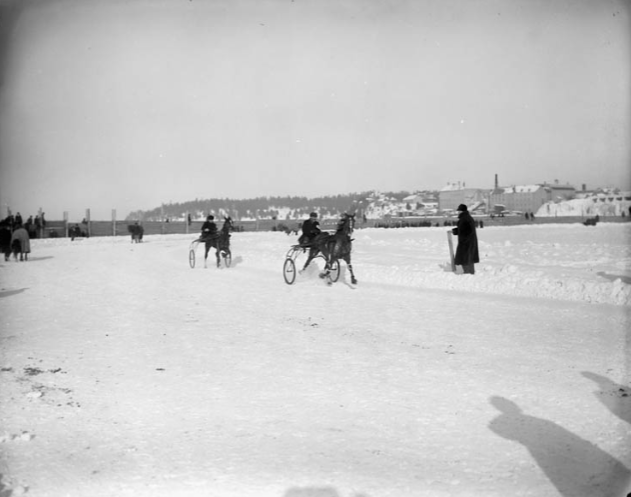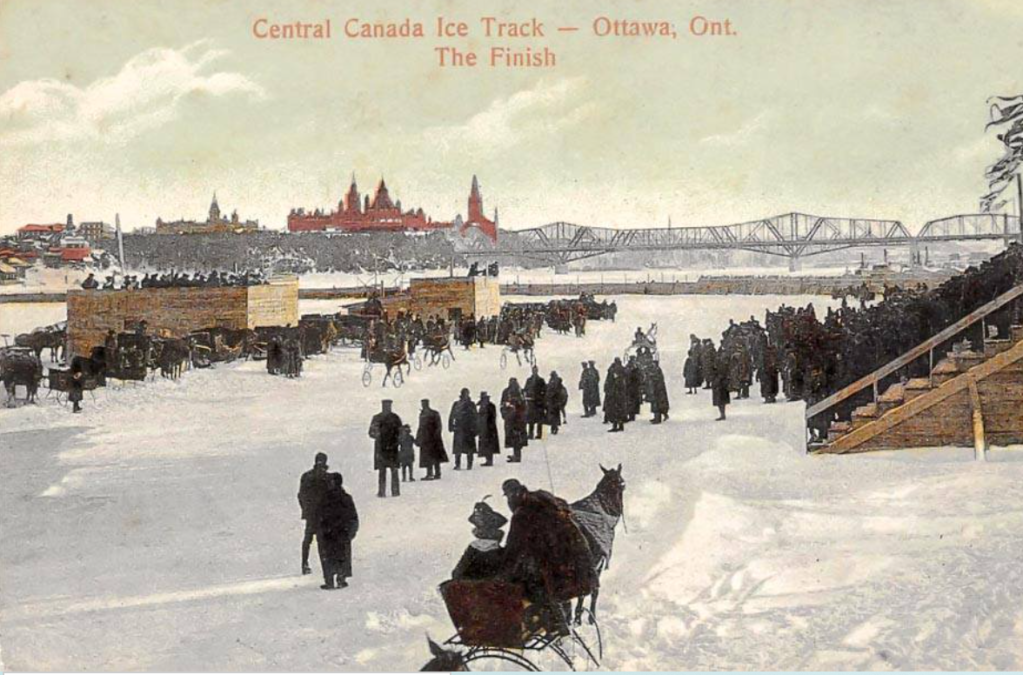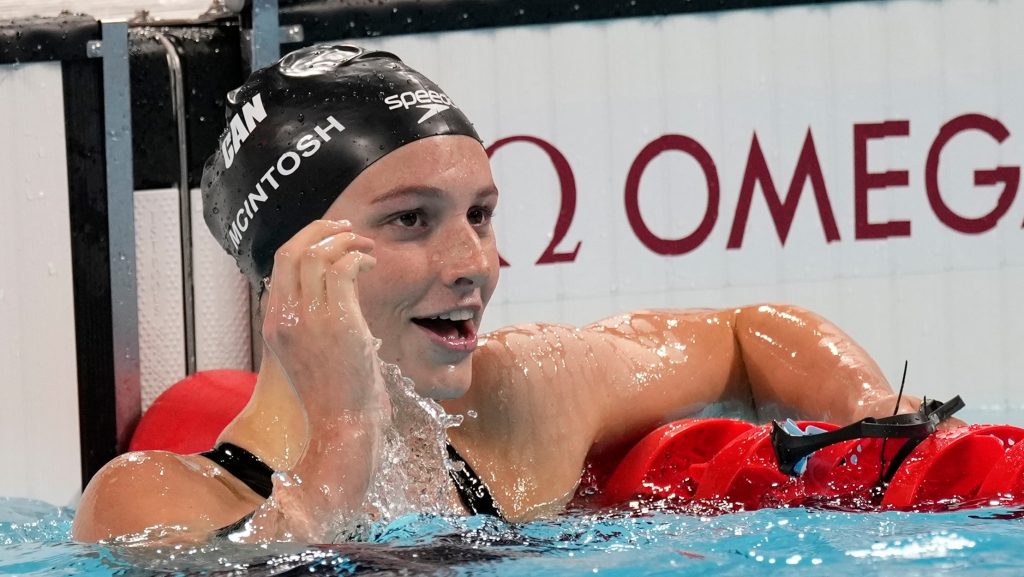Remember This? Winter trots on the Ottawa River
Posted Feb 8, 2021 02:55:00 PM.
CityNews.ca, in partnership with the Historical Society of Ottawa, brings you this weekly feature by Director James Powell, highlighting a moment in the Ottawa's history.
February 9, 1921
A sport that flourished in central Canada and in the northern United States during the late nineteenth and early twentieth centuries was winter harness racing.
In 1907, the Ottawa Citizen reported that there were few places of any importance with cold weather and access to a river or lake big enough to accommodate a quarter or half-mile track that did not indulge in the sport.
In addition to major centres such as Toronto, Montreal and Ottawa, ice racing was enjoyed in small Ontario communities, such as Napanee, Belleville and Port Perry.

Initially, horse owners were skeptical of the new sport, owing to the heightened risk of injury to their valuable horses from running on ice.
Part of the risk came from the type of shoes the horses wore. According to a report in an 1893 edition of the Canadian Sportsman, horses ran on five-calk (caulkin), all-steel horseshoes. These calks gave the horses grip on the ice. They were also sharp, and could cause serious injury. To help fortify the horses against the cold, horses were reportedly given very strong black coffee between heats. Apparently, for one aristocratic mare called Lady Mary Tudor the coffee was replaced with a bottle of champagne.
Racing on ice also had its particular challenges for drivers.
In the early days of the sport, cutters (a single-person sleigh) were used. These cutters had a propensity of swinging wide in the turns leading to trouble on crowded tracks. Consequently, they were equipped with a “knife” on the cutter’s runner which could be deployed by the driver depressing a foot-controlled lever. The knife would be thrust into the surface of the ice track, thereby giving the cutter great stability on turns and lessening the swing. In later years of the sport, cutters were replaced by the same bike sulky used in dirt track races.
Despite the risks, the sport took off.
With substantial money to be had, the reservations of horse owners quickly disappeared. Times on ice tracks were slower than on the usual dirt tracks—roughly ten seconds for a mile circuit.
When ice racing started in the Ottawa area is a bit murky.
A newspaper report from the 1920s claimed that sometime about 1860 horse racing was held on the Rideau Canal. As the Canal was not drained at this time, the surface was wide enough to make a wide racing surface. The track apparently went from a point east of the Bank Street Bridge to a spot near the “Deep Cut,” close to where the University of Ottawa is today.
Certainly, by the mid-1870s, the sport was well established across the Ottawa River in Hull at an ice track at Leamy Lake. According to the Democrat of Rochester, New York, the Leamy Lake course was “the most perfect ice track in America.”
Racing was held under the auspices of the Winter Trotting Club at Crystal Park. It was a popular, annual, mid-winter event.
The first day of racing in February, 1877, drew more than 3,500 spectators. The Citizen marvelled that given the amount of “cordial” consumed, it was remarkable that the day passed without a single fight. Prize money for the races was often provided by local hotels.
In 1887, gold and silver championship medals were offered by the Winter Trotting Club. The medals were designed and manufactured by Mr. C. Addison of Sparks Street with the inscription “Crystal Park – 1887 Champion.”
In 1900, ice racing commenced on the Ottawa River under the auspices of the Central Canada Ice Racing Association. The half-mile course was located on cleared ice near Queen’s Wharf, located roughly a quarter mile to the east of the Queen Alexandra Bridge, then under construction.
The meet, which was held in the middle of February, was the talk of the sporting world. It was widely advertised throughout Canada and the United States, and attracted hundreds of racing fans to Ottawa, some from as far away as New York City. Naturally, betting was a key attraction. F.H. Hoskins of Hamilton, Ontario did the bookkeeping while Fitch & Company, also of Hamilton, was in charge of the pools.

To ensure the success of the meet, no expense was spared.
The half-mile oval track was prepared two weeks in advance on ice that was as much as three feet thick. Local horsemen were encouraged to try out the new track in the days leading up to the big event. Stands and stalls were erected for the anticipated thousands of racing fans, punters and horses. A perimeter fence was also erected around the track. To raise the tone of the meet, ladies were admitted free.
The opening ceremonies were performed by Ottawa’s Mayor Payment, with the guests of honour being Lord and Lady Grey, the Governor General and his wife. The first day’s races featured the 2.50 class and the 2.10 class; the fields for both were very large.
The three-day meet was a huge success and was repeated annually for more than a decade, with racing extended to a full week.
The facilities for spectators and horses also improved over time. By 1909, the large, wooden club house, provided for the comfort for spectators, was heated and lit by electricity. Heated sheds were also constructed for the horses and their riders. As well, there was a separate club house for ladies.
The races attracted all segments of society, including the city’s upper crust. The Buffalo Sunday Courier said that on the ice of the Ottawa River one could see “belles and beaux galore, clad in seal, otter, black fox and Persian lamb.” Draped over the backs of Russian sleighs and English hacks were wraps of fox, musk-ox and wolf, representing “quite a bank account.”
Not all the racing was above board.
In 1908, a grey horse oddly named The Eel, owned by a Mrs O’Keefe of Buffalo, New York, had escaped the attention of bookmakers and horse enthusiasts. With few horses of any merit apparently coming out of Buffalo, people ignored it and instead focused on the top-heavy favourite, Anita. Punters began to take note when The Eel came out onto the ice driven by noted reinsman Danny McEwen who had driven a similar grey horse called Silver Joe through the 1907 Grand Circuit with considerable success. The Eel, a.k.a. Silver Joe, beat Anita, and in the process earned a fortune in bets for Silver Joe’s true owner, Frank Entricken. Mrs O’Keefe of Buffalo was none other than Frank Entricken’s sister.
The Central Canada Ice Racing Association hosted the annual event until 1911.
It had expected to continue to do so. But something went wrong late in 1911 that disrupted plans for the coming 1912 winter racing season. What exactly occurred is unclear, though a newspaper account suggested organizational problems within the association. There was also competition from both the Ottawa and Hull Driving Clubs which were both hosting ice harness racing meets during the upcoming 1912 winter season.
In mid-January, 1912, just a few days after the Ottawa Driving Club had sponsored harness racing on a flooded ice track at Lansdowne Park, the Hull Driving Club opened its inaugural meet on the ice of the Ottawa River. The stands the club erected could accommodate three thousand spectators. As in past years under the previous organizers, special stands were built for ladies who were admitted to the races for free. There were also cooling stands for the horses and refreshment booths for spectators.
Each year, the annual meet became bigger and better.
The 1917 meet, which was held over the first week of February, turned out to be the most lavish ever with purses totalling $23,000 (over $380,000 in today’s money).
But there was a cloud hanging over the event, indeed every horse racing event in Canada. While the slogan for the races that year on the Ottawa River was “business as usual,” the curtain was about to come down on the racing season in Canada.
Starting the beginning of May 1917, gambling, deemed “incommensurate with the war effort,” was suspended. Winter harness racing on the Ottawa River was over until at least the end of the war.

Ice harness racing resumed in 1920 when the law was amended to once again allow betting. That year, the races were held at Lansdowne Park.
The following year, ice racing on the Ottawa River re-commenced under the auspices of the River View Park Racing Association of Hull. The Association, whose membership consisted of Ottawa and Hull sportsmen, was established for the sole purpose of reviving winter ice racing on the Ottawa River. The president of the Association was Hull’s mayor, Louis Cousineau.
Fourteen races were organized with a total purse of $7,000 (later increased to about $9,000 with the addition of new races)—substantially smaller than the $23,000 purse of the previous 1917 meet on the Ottawa River before racing was halted owing to the wartime ban on gambling. Betting was via auction-pools, bookmaking, and pari-mutuels. Fitch & Company of Hamilton, Ontario was awarded the auction-pool and bookmaking privileges for the meet.
The seven-day meet, which ran from February 3 to February 9, 1921, was held on the Quebec side of the Ottawa River.
Press reports don’t give the precise location, but access to the circuit was likely from what is now Jacques Cartier Park. Like in earlier years prior to the war-time interruption of ice racing, there were stands on the ice for 3,000 spectators along with a heated wooden pavilion 380 feet long by 140 feet wide. A separate stand for ladies was also built. The judges’ and timers’ stands were enclosed by glass. The track, 60 feet wide in the stretches, was described as the best ever. In addition to local horses, many horses came in from the United States—some had just competed in the Mt. Clemens, Michigan ice races held a few days before the Hull event.
Each day of racing featured two or three races (with heats), each with a purse of $300-$500, with half going to the first-place horse, 25 percent to the second, 15 percent to third place, and 10 per cent to the fourth-place finisher. In addition, $6 and $4 were given to the fifth and six-place finishers, respectively. The 1921 races were held under the rules of the Canadian National Trotting and Pacing Harness Horse Association.
The week-long event was a huge success.
The crowds were large and the races were well received. Mayor Cousineau was the guest of honour on opening day, and said the word “Go” for the start of the first heat of the opening race, the 2.35 class for horses born within 100 miles of Hull.
The last day of racing, February 9, 1921, featured two classified one mile-races—the classified trot and the classified pace—each with a purse of $300. Franklin B., a chestnut gelding, won the trot in a time of 2 minutes 25 ¾ seconds. King Zip, a black gelding, took the pace in a time of 2 minutes, 21 ¼ seconds.
Despite the resounding success of the meet, which the Citizen described as “the cleanest and best race meeting seen on ice in many years,” the last day of the River View meet was also the last time ice racing was held on the Ottawa River.
In 1922, the ice races were held at Lansdowne Park in the context of the Canadian National Winter Carnival. Despite the popularity of the sport, ice harness racing then disappeared from Ottawa’s winter scene.
Winter harness racing was resuscitated in 1979 for the first Ottawa Winterlude and was held annually on the Rideau Canal until 1985.








